Menstrual cramps occur as a result of natural physiological processes in a woman’s body. In the second phase menstrual cycle hormonal composition changes. Prostaglandin hormones cause the muscles of the uterus to contract to shed the endometrial layer. The intensity of movements depends on the amount of prostaglandins. The more there are, the stronger the feeling. It is impossible to avoid such a situation, but it is possible to reduce the manifestations of painful spasms. To do this, you need to pay close attention to your body, follow simple recommendations, seek help from specialists in a timely manner, and, if necessary, undergo treatment.
The state of health of each person depends on what he eats, how he does it, when he takes the time to eat. First of all, it is necessary to reconsider the diet and diet. Food can save you from painful periods, or, on the contrary, provoke them. If you can’t eat right and eat healthy foods all the time, you should do this at least 2 weeks before the start of your next period. This is when the amount of prostaglandins begins to increase.
Reduce consumption of salty and sweet foods. Such a simple requirement requires special effort. Because before your period you really want both. Physiological processes and hormones are also to blame for this. Therefore, it is better to draw a balance line.
- Avoid confectionery products with cream - cakes, pastries, buns.
- Replenish the amount of sugar with honey and fruits.
- Consume chocolate in limited quantities - 1 chocolate bar per week or 1 piece of candy per day.
 A deficiency of salt is just as dangerous as its excess. In the case of menstruation, salt leads to fluid retention in the body, slows down the onset of menstruation, which leads to painful cramps. You shouldn’t completely give up eating salty foods. One piece of herring a day will do you good.
A deficiency of salt is just as dangerous as its excess. In the case of menstruation, salt leads to fluid retention in the body, slows down the onset of menstruation, which leads to painful cramps. You shouldn’t completely give up eating salty foods. One piece of herring a day will do you good.
Food should be light and healthy:
- porridge;
- vegetables;
- fruits;
- whole wheat bread;
- sour milk products.
You should eat small portions several times a day. Not 3 times a lot. It is recommended to boil, steam, and bake dishes. It is necessary to avoid fried, fatty and spicy foods.
Ensuring a balance of vitamins and minerals
 The cause of painful periods is a deficiency of vitamins and minerals. The spasm is provoked by a lack of calcium, magnesium, and sodium. You can replenish the balance with good nutrition or a vitamin complex. In the latter case, the effect will be felt much faster. And the combination of both is guaranteed to relieve painful cramps during menstruation. It is enough to take 1 tablet a day to improve the general condition of the body and make it resistant to pain. There are special vitamin preparations specifically for women's health.
The cause of painful periods is a deficiency of vitamins and minerals. The spasm is provoked by a lack of calcium, magnesium, and sodium. You can replenish the balance with good nutrition or a vitamin complex. In the latter case, the effect will be felt much faster. And the combination of both is guaranteed to relieve painful cramps during menstruation. It is enough to take 1 tablet a day to improve the general condition of the body and make it resistant to pain. There are special vitamin preparations specifically for women's health.
Rejection of bad habits
Women who drink alcohol, smoke, and abuse coffee are more likely to suffer from painful periods. Smoking causes irreparable harm to the female body. On the eve of menstruation, nicotine constricts blood vessels, impairs blood circulation, delays the outflow of blood, which causes pain, disruption of the uterus, and cramps.
Alcohol negatively affects the entire body. It retains fluid, increases the amount of toxins, leads to weakness, malaise, and disrupts the functioning of the intestines, which in a painful state negatively affects the functions of nearby genital organs. Intestinal spasms provoke spasms of the uterine muscles, and vice versa.
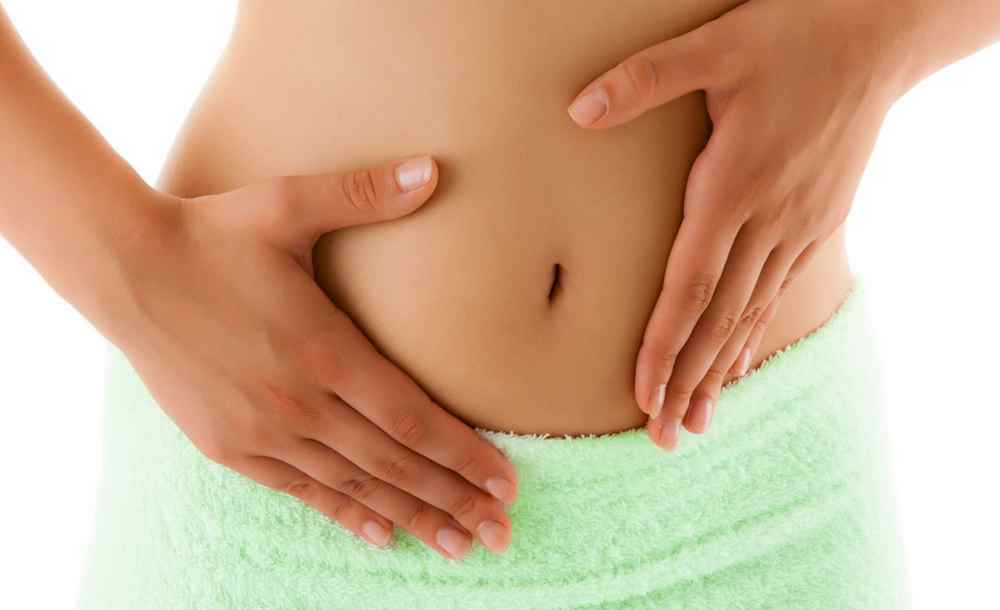 Nobody wants to get addicted to coffee. Caffeine makes the body work harder. Artificially adds energy, then required long time to replenish it. Oils contained in coffee can increase pain and disrupt the intestinal microflora. Caffeine irritates the nervous system, the state of which determines the body's perception of pain. With normal functioning of the nervous system, painful cramps before menstruation practically do not occur.
Nobody wants to get addicted to coffee. Caffeine makes the body work harder. Artificially adds energy, then required long time to replenish it. Oils contained in coffee can increase pain and disrupt the intestinal microflora. Caffeine irritates the nervous system, the state of which determines the body's perception of pain. With normal functioning of the nervous system, painful cramps before menstruation practically do not occur.
Methods for relieving painful spasms
When the arrival of menstruation makes itself felt by pain, it is necessary to take measures to eliminate the unpleasant sensations.

IN difficult situations treatment with medications is required.
Treatment of pain before menstruation
The plant-based drug No-shpa will help relieve spasms. Treatment can be started from the first days of menstruation if the situation occurs repeatedly. Take the drug 3 times a day, 2 tablets. The pain disappears after 10-20 minutes. Since Nosh-pa does not possess, but acts on the cause of pain. Improves the functioning of the uterus, relaxes muscles. The drug has no contraindications or side effects.
The group of antispasmodics includes:

Non-steroidal drugs for the treatment of menstrual pain are used to achieve a quick effect. The drugs have an anti-inflammatory effect:
- Naproxen;
- Ibuprofen;
- Piroxicam;
- Diclofenac.
Analgesics can provide immediate treatment. All means that end in - lgin. Analgin is most often used.
If the situation with painful sensations repeats several cycles, you need to seek help from a doctor. The specialist will prescribe appropriate treatment and a suitable drug.
About 50% of women experience cramps during their periods. The intensity of discomfort can vary greatly. Sometimes cramps in the lower abdomen in women warn of a serious illness.
The spasm that appears during the period of “critical days” is justified by the natural physiological processes occurring in the female body. For example, a change in hormonal levels, which begins in phase 2 of the cycle.
Hormone-like substances prostaglandins provoke contraction of the uterine muscles. This process causes endometrial shedding. The amount of prostaglandins affects the intensity of movements. The more such connections, the stronger the pain syndrome.
Another provoking factor is a deficiency of endorphins and progesterone. In addition, a woman may have an increased threshold for pain sensitivity.
If there is no illness
Not all reasons why cramps appear during menstruation are associated with the course of a particular pathology. Most often, unpleasant symptoms occur with the following phenomena and conditions:
- poor nutrition;
- lack of balance of sex hormones;
- insufficient amount of fluid in the body;
- magnesium and/or calcium deficiency;
- low physical activity;
- postpartum syndrome;
Pathological causes
Sometimes cramps that occur during menstruation are caused by the development of the following pathological processes:
- inflammation;
- infection;
- myoma or fibroma;
- polycystic disease;
- cyst;
- endometriosis;
- uterine polyps;
- uterine bend.
In some cases, this symptom signals the development of an oncological process.
When to see a doctor
You should not hesitate to visit a doctor. The first alarm bell is severe pain that is impossible to tolerate. Unable to do their usual activities, many women for this reason lie in bed “in the fetal position.” One more dangerous symptom considered insensitive to pain medications. You should also consult a doctor if the colic lasts more than two days.
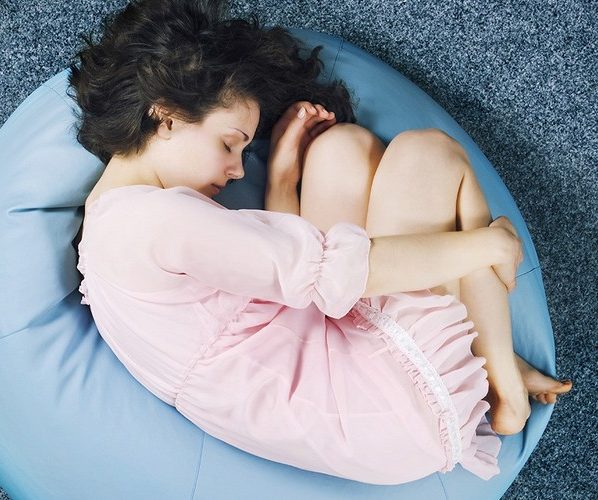
This condition can be combined with the following manifestations:
- headaches;
- dizziness;
- nausea and vomiting;
- diarrhea;
- fainting.
Menstrual blood can be very heavy. Large clots often appear in it, and the duration of “critical days” reaches seven days.
How can you help a woman
Women suffering from painful menstruation are concerned about what to do to prevent discomfort. The first thing is to protect the nervous system. It is recommended to spend more time in nature, embroider, draw, swim or meditate. Walking through the forest or park is very useful.
Simple steps help relieve painful spasms physical exercise. They need to be performed regularly. You should not increase the load, and if severe pain appears, exercise should be stopped. Properly performed physical exercises help relieve pain and tension from the genitals. The disappearance of discomfort is explained by the relaxation of the uterine muscles.
Baths bring great benefits to the body. To improve the result, it is recommended to add to water sea salt or baking soda. Water treatments It is advisable to do it daily.
Massage sessions are one of the new methods of treating menstrual cramps. To relieve pain, it is recommended to gently apply pressure in the area just below the navel. Then you should use gentle movements to massage the depressions located slightly above the heels.
A strong orgasm also helps to relax the uterine muscles, so it is recommended to have sex before the “critical days” begin.
Changing your diet
Avoiding painful cramps will help to exclude from the diet foods that have Negative influence on the stomach. Consumption of the following foods may intensify spasms:
- Sahara;
- alcohol;
- caffeine
Their number needs to be reduced. Moreover, before " critical days“It’s better to give up coffee, black tea, and carbonated drinks that contain caffeine. In addition, you should completely avoid products containing alcohol, including kvass.
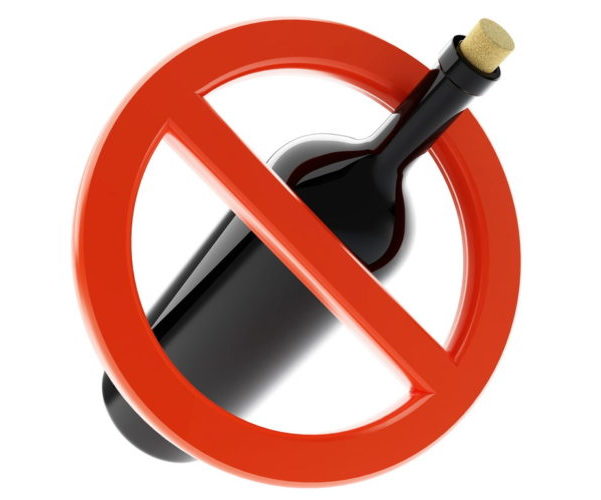
It is very important to reduce your consumption of various burgers and crackers. You should avoid chips completely, as they contribute not only to the appearance of cramps, but also to the concentration of harmful cholesterol. The amount of food rich in carbohydrates should be reduced. You can eat porridge, high-quality milk, vegetables and fruits. Eating whole grain bread is very beneficial.
It is equally important to maintain a drinking regime. A woman should drink 2 liters of water per day. Preference should be given to unsweetened fruit drinks, compotes, and rosehip decoction.
Use of medications
Sometimes cramps during menstruation are so strong that they require drug therapy. Drink medicines It is possible only as prescribed by a doctor. Usually, for abdominal pain during menstruation, the following groups of drugs are prescribed:
- analgesics;
- antispasmodics;
- non-steroidal anti-inflammatory drugs.
Often the doctor prescribes painkillers such as Novalgin, Baralgetas and Analgin to his patient. The analgesic effect occurs 30 minutes after administration. Its duration varies from four to six hours.
Painkillers are not recommended for women suffering from bronchial asthma, liver failure and allergies.
Antispasmodics are allowed to be taken without medical supervision. The duration of the therapeutic course is two days. If the pain does not subside, it is allowed to take the antispasmodic drug for some more time, but after consulting a doctor. Medicines such as Papaverine, Halidor and Spasmonet are usually prescribed. In addition, antispasmodics are allowed: Buscopan and No-shpa. Women suffering from glaucoma should not take these medications. Antispasmodics are not prescribed to persons with allergic reaction and heart failure.
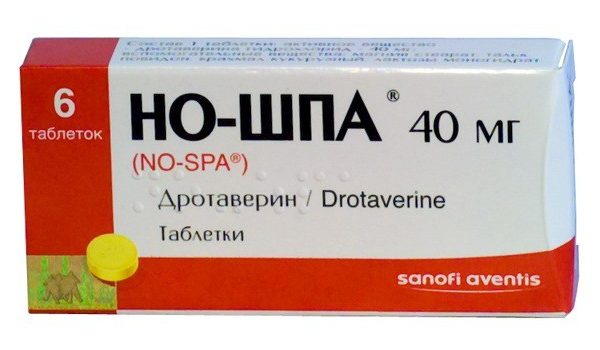
Non-steroidal anti-inflammatory drugs have a remarkable analgesic effect. Often, women suffering from cramps are prescribed Piroxicam, Paracetamol, Naproxen, Ketoprofen and Ibuprofen. You need to take medications after meals. Take the tablets only with boiled water. The analgesic effect should be expected within half an hour. Its duration varies from six to eight hours. The therapeutic course is four days.
Sometimes antispasmodics are taken together with these medications. If during menstruation cramps are accompanied by nausea ending in vomiting, it is allowed to use rectal suppositories. However, for duodenal ulcers, liver diseases and allergies, these medications should be avoided.
Use of hormonal contraceptives
Sometimes, to eliminate cramps during menstruation, the doctor prescribes hormonal contraceptives containing progesterone and estrogen. Due to their use, thinning of the endometrium is observed, and for this reason the uterus does not contract as much.
Women suffering from severe menstrual pain and cramps are allowed to use the following dosage forms:
- vaginal rings;
- special plasters;
- injections.
Hormone therapy must be prescribed by your doctor. If therapy with contraceptive drugs does not bring the desired effect, the doctor makes a decision regarding treatment with progesterone. This method is considered the most effective.
Help at home
Cold helps to freeze painful spasms. It is recommended to place an ice pack, previously wrapped in a towel, on your stomach. You need to keep it for no more than ten to fifteen minutes.
Massage of the lower back and abdomen helps reduce the strength of spasms. Gentle circular movements are performed clockwise. The pressure on the abdominal area should be light.
Herbal infusions can help get rid of spasms. Pharmacy preparations that have an analgesic effect are recommended to be brewed and drunk like tea. Good natural antispasmodics are decoctions of raspberry leaves, mint, chamomile and oregano.
We recommend similar articles
It has been found that about 50% of women experience discomfort in the lower abdomen both before and during menstruation. Painful spasms can vary in intensity. From minor pulling sensations to severe pain, which is not always relieved by pills and forces you to bend in half. They lead to disruption of the usual way of life, force one to lie in bed, and sometimes cause ambulance. And if you also take into account headaches, nausea, dizziness, severe weakness, increased irritability! This is why many of us dread the arrival of our periods.
But there are women and girls whose periods pass almost unnoticed, with the exception of changing pads. They can do what they love without experiencing any discomfort.
Below we will look at the main causes of painful menstrual cramps, methods of prevention and treatment. And what you need to do and change in your life before their onset so that your periods are painless and do not disturb our usual routine.
Why do cramps occur and stomach pain?
Dysmenorrhea or pain in the lower abdomen occurs due to contractions of the uterus, which at this time rejects and pushes out the mucous membrane and accompanying blood. This process occurs when the level of prostaglandins, hormones that are found in the uterus and other organs, increases. They cause contractions of the smooth muscles of the uterus. The more of them produced in the body, the stronger the pain during menstruation.
What are the main causes of painful periods?
- Diseases of the female reproductive system:
- Infection, inflammation of the pelvic organs.
- Fibroma.
- Myoma.
- Endometriosis.
- Cysts, polycystic.
- Polyps.
- Bend of the uterus.
- Uterine cancer.
- Causes not related to gynecological diseases:
- Disturbed balance of sex hormones.
- Increased pain sensitivity.
- Unbalanced and irregular nutrition.
- Insufficient fluid intake into the body.
- Calcium and magnesium deficiency.
- Sedentary lifestyle, low physical activity.
- Pain after abortion or childbirth.
As we can see from the list, more often painful spasms occur as a result of causes not related to gynecological diseases. Therefore, it is better to take preventive measures before their onset and change something in your life than to swallow analgesics and antispasmodics later.
Menstrual flow in women is the result of an important process of reproductive function, which is interconnected with hormones. Hormonal background may increase or decrease depending on the day of the menstrual cycle. Cycle adult woman lasts about 28 days. A small number of women do not experience any changes during menstruation, except for menstrual bleeding that continues for several days. But most women experience discomfort during this period, including cramps. Such spasms during menstruation are usually called algodismenorrhea.
Menstrual cramps bother most women
Cramps during menstruation. Causes of pain and mechanisms of occurrence. Signs of pathology
Each woman’s cycle lasts a certain number of days (from 28 to 35 days) and rarely deviates from the norm if there are no pathological processes. And menstrual flow can last from 3 to 5 days. Short-term spasms of low intensity during menstruation, which do not distract a woman from her usual way of life, are the norm. But a certain percentage of women may experience a strong spasm, which leads to a complete disruption of the rhythm of life during menstruation, and a decrease in physical activity.
A woman may experience sharp, cramping spasms during menstruation, which are concentrated in the lower abdomen.
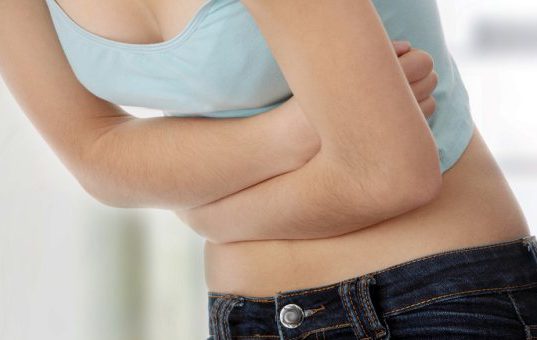
Sometimes pain can be concentrated in the kidney area. Severe pain during menstruation can manifest itself directly in the presence of discharge or several days before its onset. What pain syndrome can be characterized by short-term attacks. The onset of severe pain during menstruation affects a woman’s body, reducing performance and depleting the nervous system. Sometimes such manifestations may be accompanied by asthenic conditions and vascular disorders. Some women may have diarrhea or abdominal cramps.
Sharp spasms can completely incapacitate a woman
Causes of spasms
When a woman begins menstruation, this is a sign of rejection of the endometrium that grows throughout the entire cycle in the uterine cavity. This process is accompanied by minor blood loss. To separate the endometrium, the walls of the uterus begin to contract intensively, causing spasms, which leads to pain during menstruation. After the mucous membrane has been renewed, recovery begins, and by the end of the fifth day the process is completely completed. After passing through all these stages, the woman’s body is ready to attach the egg to the wall of the uterus. During this period, the layer of endometrioid tissue grows rapidly and tends to thicken several times. The glandular tissue of the uterus grows.
If fertilization does not occur and the embryo is not implanted on the wall of the uterus, the endometrium dies and the next period begins, which is accompanied by menstrual flow. The medical term for the symptom of painful menstruation is algomenorrhea. Experts usually distinguish between the primary and secondary forms of the symptom. The secondary form is caused by the presence of pathological processes in the organs of the reproductive system, and the primary stage has no connection with disturbances in the functioning of the reproductive organs. Algodismenorrhea can manifest itself as severe pain syndrome
- Excess prostaglandins. These substances, which are produced in the body from fatty acids, can cause spasms in the muscle tissue of the uterus and lead to a narrowing of blood vessels.
- Low level of endorphins in the blood.
- If a woman has increased pain sensitivity, then any minor contractions of the uterus can cause the most severe sensations.
- Lack of progesterone production. A short period of ripening of the corpus luteum (luteinizing phase) can provoke the appearance of spasms.

Endorphin in large quantities reduces the pain of spasms
When pain is a sign of pathology
If menstruation is accompanied by the following symptoms, then the woman should urgently seek help from specialists:
- Increased body temperature, appearance acne during menstruation.
- If women experience digestive disorders.
- Strong painful sensations, which do not cease to manifest themselves for several days.
- If a woman does not feel relief after taking painkillers.
- The pain continues to intensify even after the end of menstruation.
- Symptoms of heavy menstrual bleeding for one or two cycles require mandatory consultation with a specialist.
- After the passage of normal menstruation, a cycle with painful sensations begins.









